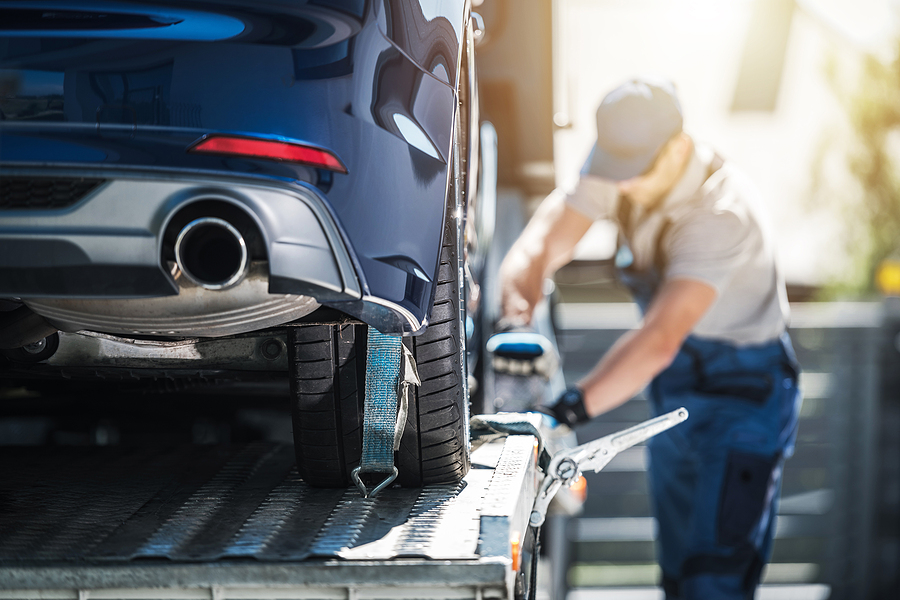When it comes to vehicle breakdowns or other roadside issues, a common dilemma many people face is whether to opt for a DIY solution or to call a professional towing service. While the idea of saving some money can make DIY seem appealing, it’s important to consider the potential risks and challenges that could arise.
This blog post aims to shed light on why choosing a professional tow truck company for towing services, including long distance towing, is often a smarter, safer, and more cost-effective option. Read on to understand the unbeatable advantages of professional towing services and why they should be your first choice in times of vehicular distress.

What Professional Towing Service Can Offer You
Expertise and Experience
Want to know one of the primary reasons to opt for professional towing services? Their expertise in handling all types of vehicles. Towing companies hire experienced professionals who receive extensive wrecker service training. This training includes how to properly load, transport, and unload various types of motorized assets. They are also equipped with the latest tools and techniques.This allows them to provide efficient solutions for different kinds of roadside emergencies. Their experience and expertise ensure that your vehicle is in safe hands and will be handled with utmost care. Additionally, it gives you peace of mind. Knowing that your car is being taken care of by professionals who have dealt with similar situations before feels good.
24/7 Availability
Vehicle breakdowns are unpredictable and can happen at any time. This is where professional towing services shine. They are available 24/7, including holidays and weekends. No matter where you are or what time of the day it is, a reliable tow truck company will be at your service in no time. This round-the-clock availability means that you don’t have to wait for hours for help to arrive, especially in emergency situations.
Enhanced Safety and Security
DIY towing can be dangerous, not only for yourself but also for other drivers on the road. It requires a certain level of skill and knowledge to properly secure a vehicle onto a towing truck. This is especially true when dealing with heavy or oversized vehicles. Licensed and insured towing services have the necessary equipment and trained personnel to safely handle your vehicle and transport it without causing any harm to you or others on the road.
Towing Service is Cost-Effective
While DIY solutions may seem cheaper at first, they can ultimately end up costing you more in the long run. Inexperienced handling of your vehicle can lead to further damage or accidents, resulting in expensive repairs or legal fees. On the other hand, professional tow truck services come with insurance coverage that protects your vehicle from any damages caused during transportation. This means that you won’t have to worry about any additional expenses in case of accidents or mishaps.
Long Distance Towing Service
Long distance towing can be extremely challenging, especially if you’re planning on doing it yourself. It requires specialized equipment and knowledge of the best routes to take for safe transportation. Professional towing services are well-equipped to handle long distance towing, ensuring your vehicle reaches its destination safely and on time. This is particularly helpful when relocating to a new city or state.
Wrapping Up
In conclusion, while DIY solutions may seem like a good option for saving money, they can come with significant risks and challenges. Opting for professional towing services from a reputable tow truck company not only ensures your safety and the safety of your vehicle but also provides you with peace of mind. Additionally, it can end up being a more cost-effective option in the long run. So, the next time you find yourself in need of towing services, remember to choose the professionals for a hassle-free and secure solution.
Looking for a professional towing and recovery company near you? Contact Zore’s Towing at 317-247-8484 for a wide range of towing services in Indianapolis and surrounding counties. We offer everything from light-duty and long distance towing to heavy equipment transportation, wrecker service, and more. We transport all throughout Indiana and across state lines.
Related Posts:
A Complete Guide to Hiring the Right Wrecker Service
Where You Should Wait When Waiting for a Tow Truck
Will My Car Insurance Pay For Towing Fees?
